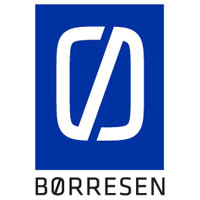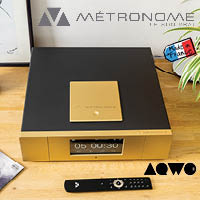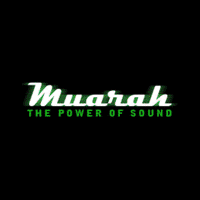A feather on the breath of God: Sequences and Hymns by Saint Hildegard of Bingen/Gothic Voices/Hyperion vinyl edition [2024]
Hildegard of Bingen (1098 – 1179) was a German Benedictine Abbess who was also a writer, composer, philosopher, mystic and visionary during the High Middle Ages (AD 1000 to 1300).
During Bingen’s lifetime, musical notation was in its infancy, and the concepts of rhythms, harmony and counterpoint were centuries away. As such, Bingen’s music is primarily monophonic (Plainchant), melismatic lines of convex melody with only a drone instrument such as a vielle or organistum as a sometimes accompaniment.
Bingen’s 77 liturgical chants (eight included on the LP) are written in German neumes on a four-line staff using C and F clefs.
An example of Bingen’s compositions, Symphonia Harmonie Celestium Revelationum
Although there was little to learn about music theory at the time, Bingen was self-taught. And in keeping with her religious focus (bought on by “visions” when she was as young as three years old), Bingen said: “Without being taught by anyone, since I had never studied neumes or any chant at all, I composed and sang chant with melody, to the praise of God and his saints.”
Bingen’s career fell short by a couple of decades of the works of Léonin and Pérotin, important figures in the development of polyphonic organum (more than one musical line creating harmony) therefore, her music is “limited” to a simple melody to a text sung by one or more voices (male or female) in unison.
So, you may ask, how did this simple music become so popular in the early ‘80s and inspire this million-seller album released in 1982? I believe the record came first and catapulted Hildegard of Bingen into superstar status. She became beloved by a wide section of society, not just medieval musicologists. I remember the growth of her popularity back in the early ‘80s in Toronto after graduation. Two female acquaintances, not musicians, named their pets after the composer (“Hildy”). Bingen had jumped the shark into the mainstream, with the help of this magnificent recorded document.
A transcription of the melody of De Virginibus (not on the record), showing the convex arc of the melody (notice the melody never jumps more than a third).
The Abbess’ music is hypnotic in its simple beauty and never-ending melismas. When heard, the drone is very effective in securing the melismas to the ground as the ladies or gentlemen’s voices float above. It is a magical effect. Although I only heard this LP at the time of release, the effect was not forgotten. You’ll want the record to last longer and seek out other recordings of Bingen’s music.
The performances are scholarly and beautiful, both in phrasing and intonation. Gothic Voices contains some of the best London pros of the ‘70s (including the brilliant Emma Kirkby), and they capture the simple but spellbinding sound in the lovely acoustic of the Church of St Jude-on-the-Hill, Hampstead. The original recording by Tony Faulkner took place on September 14, 1981. The director of Gothic Voices, Cambridge don Christopher Page, wrote the book on Bingen and medieval performance practice. It shows in confidence how they all bring off this deceptively simple music.
This is my second review of records from the new Hyperion Vinyl Edition. We get four, with hopefully more to come. The Alina Ibragimova/Mendelsoohn LP was superb in performance and recording. It made our Audiophilia Dream List, as will this spectacular new pressing of the Bingen.
Yes, it’s an original, early digital recording pressed (I’m assuming) from the original digital tapes. No worries, as it almost matches the flawless transfer of the Mendelssohn Concerto. There is an added difficulty on this LP that does not occur on the Mendelssohn, soprano head tones. And not just one soprano, although recording one in full voice is a challenge, but several (no such problem for the tenors). At the odd time, we approach a frequency shout as if the original tape was a little saturated at these very demanding moments. It’s no bother, and you may not hear it on your setup. But I also heard it on the Apple Music stream (a good idea to stream this first, just in case the music doesn’t fit. I think it will).
The LP arrived flat and silent; it was pressed at MPO in France and was cut by Daniel Krieger. Notes and gatefold cover are of exceptional quality.
I dare you to join the million others and try this almost 1000-year-old haunting, gorgeous music. Very highly recommended.
Hyperion Records (no financial affiliation)

![A feather on the breath of God: Sequences and Hymns by Saint Hildegard of Bingen/Gothic Voices/Hyperion vinyl edition [2024]](https://images.squarespace-cdn.com/content/v1/55787f0ae4b02f0501debbeb/1735250252373-6NHMQ5AMTOVPAMDWGYH0/IMG_0873.jpeg)






![Tchaikovsky: Piano Concerto No. 1 in B flat minor, Op. 23 Argerich/Kondrashin—Esoteric Mastering vinyl reissue [2024]](https://images.squarespace-cdn.com/content/v1/55787f0ae4b02f0501debbeb/1735053612224-LB2ZEN4Q8TPL1OSXTCOE/a.jpg)





















